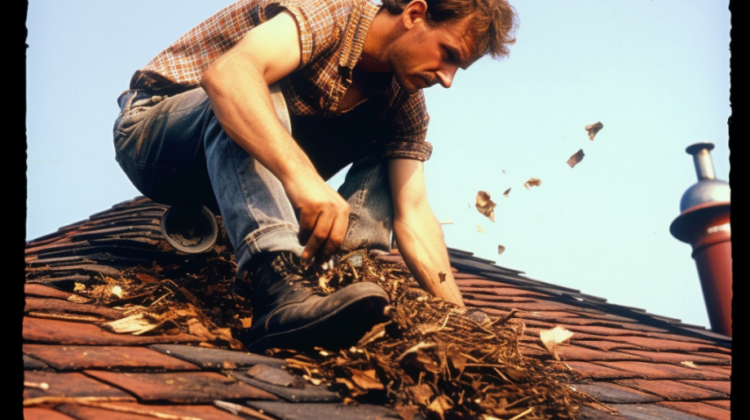
Your roof is one of the most critical components of your home’s structure. It protects you and your belongings from the elements and keeps you safe and dry. However, roof shingles can become damaged or broken over time, leaving your home vulnerable to leaks and other issues. If you discover broken roof shingles, it’s essential to take prompt action to prevent further damage. Here’s what you should do when you have broken roof shingles.
Assess the Damage:
- Start by carefully inspecting your roof to determine the extent of the damage.
- Look for missing or cracked shingles and any signs of water infiltration.
- Take note of the affected areas and the number of damaged shingles. This information will be helpful when you seek professional assistance.
Temporary Fixes: If you notice a few broken shingles and the damage is limited, you can perform quick fixes to prevent further water intrusion. Use roofing cement to seal any cracks or gaps in the damaged shingles. Ensure the cement is spread evenly and covers the affected area entirely. This quick fix will take time until a professional can properly repair or replace the broken shingles.
Call a Professional Roofer: While temporary fixes can provide short-term relief, it’s crucial to have a professional roofer assess and repair the damage. Contact a reputable roofing contractor who specializes in shingle repairs. They have the knowledge, skills, and tools to handle the job safely and effectively. A professional will conduct a thorough inspection, identify the underlying causes of the damage, and recommend the appropriate course of action.
Replace Broken Shingles: If the damage is extensive or a significant number of shingles are broken, they will likely need to be replaced. Depending on the type of shingles you have, the roofer will remove the damaged ones and install new ones. This process ensures that your roof maintains its structural integrity and protects your home adequately. Remember to choose shingles that match the existing ones to maintain a cohesive look.
Check for Underlying Issues: Broken shingles can be a symptom of underlying problems with your roof. It could be due to age, improper installation, or damage caused by severe weather conditions. As part of the repair process, the roofing professional will inspect the roof deck and other components to identify potential issues. Addressing these problems will help prevent future damage and prolong the lifespan of your roof.
Regular Maintenance: After the broken shingles have been repaired or replaced, it’s essential to establish a regular maintenance routine for your roof. Regular inspections and maintenance can help identify and address minor issues before they escalate into major problems—regularly clear debris, such as leaves or branches, from your roof and gutters. Trim overhanging tree branches that could damage the shingles during storms. Additionally, schedule professional roof inspections every few years to catch any potential issues early on.
Consider Insurance Coverage: Depending on the cause of the broken shingles, your homeowner’s insurance policy may cover the repair costs. Contact your insurance provider to determine if the damage falls under your policy’s coverage. Document the damage with photographs and provide evidence to support your claim. Working with your insurance company can help alleviate some of the financial burdens associated with roof repairs.
Broken roof shingles require immediate attention to prevent further damage to your home. Assess the extent of the damage and perform temporary fixes if possible. However, contacting a professional roofer is crucial to repair or replace the broken shingles properly. Address any underlying issues, establish a maintenance routine, and consider insurance coverage. By taking these steps, you can ensure that your roof remains in good condition, protecting your home for years.
